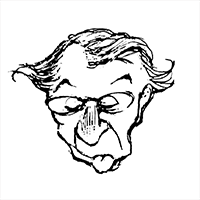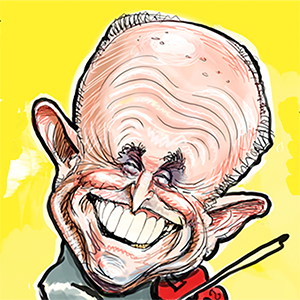'The Brutalist' re-creates the drama and beauty of mid-century Philadelphia
Published in Entertainment News
PHILADELPHIA — When filmmaking duo Brady Corbet and Mona Fastvold developed the script for "The Brutalist" — a fictional drama about the American dream and the complicated relationship between artist and patron that unfolds over decades — they zoomed in on Philadelphia and Bucks County.
The story follows László Tóth (Adrien Brody), a Jewish Hungarian architect who immigrates to the U.S. in 1947 after surviving the Holocaust. He meets his cousin, who runs a furniture store in Philadelphia, and later shovels coal in the city before catching the attention of Harrison Lee Van Buren (Guy Pearce), a rich industrialist who owns a vast, lush estate in Doylestown. It's in that beautiful, treacherous landscape where Tóth embarks on Van Buren's ambitious commission to construct a community center.
"The film always had to be set in the Northeast, because the mid-century designers were predominantly stationed there," said director and co-screenwriter Corbet. "Philadelphia is just an important place for modern architecture, because of Louis Kahn, Paul Rudolph, you name it."
The region is "also a place where you could find these kind of incredible mansions and these wealthy families," added Fastvold, who cowrote the screenplay with her partner, Corbet.
In creating the cruel and demanding Van Buren character, the pair took inspiration from Albert Barnes, Andrew Carnegie, and other famous industrialists and collectors of the era to depict an abusive relationship between art and commerce.
"The Barnes Foundation was a big inspiration for the Van Buren estate," said Corbet. "We just were thinking a lot about collectors in general ... obviously [the character is] a much more perverse variation of Barnes, who was a beloved figure."
In this story, Van Buren isn't satisfied with just owning Tóth's work: The patron wants to own the artist too.
The film's title doesn't solely refer to the architectural style of brutalism that Tóth employs but to brutality of all kinds, as cinematographer Lol Crawley explained: "Yes, it's specifically about brutalist architecture, but also, it's a catalyst in some ways for exploring the brutality of man's impact on the landscape — one instance is obviously in the Carrara marble quarries [that Van Buren and Tóth visit in Italy]. But also, man's brutality to man — the Van Buren character and his behavior towards László."
While the landscape and scenery of Philadelphia and Bucks County were central to "The Brutalist," the crew mostly filmed in Hungary, which Corbet and production designer Judy Becker believed could better portray a historical Philadelphia. They also used some archival footage featured in retro PSAs about Pennsylvania as "the land of decision."
Center City has changed so much over the past 50 years that Corbet said it was difficult to represent an older version on camera. Corbet and Becker scouted around Hungary for weeks, searching for places that could provide a feeling of 1950s-1960s Philadelphia.
"I was thinking a lot about all of the smoke stacks in Kensington, which is something that is pretty easy to find in the more industrial areas in and on the outskirts of Budapest," said Corbet. "Once we locked into that, and like Kensington specifically, which is, of course, an area where many immigrants were living and working, it all just suddenly clicked." (Kensington is also where Barnes was raised.)
Becker, who worked on the Philly-based "Silver Linings Playbook," researched the aesthetic of historic Philadelphia and found unique locations in Hungary that fit her vision, like the diner where Tóth and Van Buren discuss a potential partnership. "That wasn't a location anyone had ever shot in before, and that is kind of rare in Hungary," she said. "That was just from really looking at what could work, what could pass for Philadelphia."
It took the team about seven years to make the epic film, which runs more than three-and-a-half hours (with a 15-minute intermission). As the awards season starts heating up, "The Brutalist" has landed in the spotlight, racking up seven Golden Globe nominations, including best motion picture, best director, best screenplay and best cinematography. It will likely be an Oscars darling as well.
Becker's elaborate designs combined with Crawley's cinematography (the entire film was shot in the vintage VistaVision format for additional period authenticity) makes for jaw-dropping depictions of the region — even if it wasn't shot locally.
(c)2024 The Philadelphia Inquirer Distributed by Tribune Content Agency, LLC.
















Comments